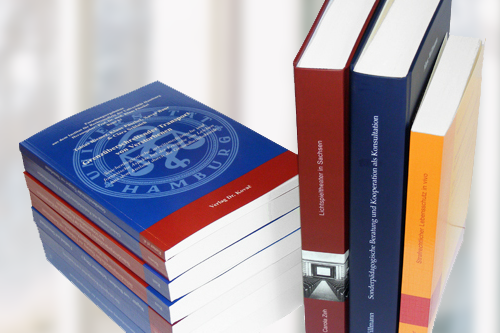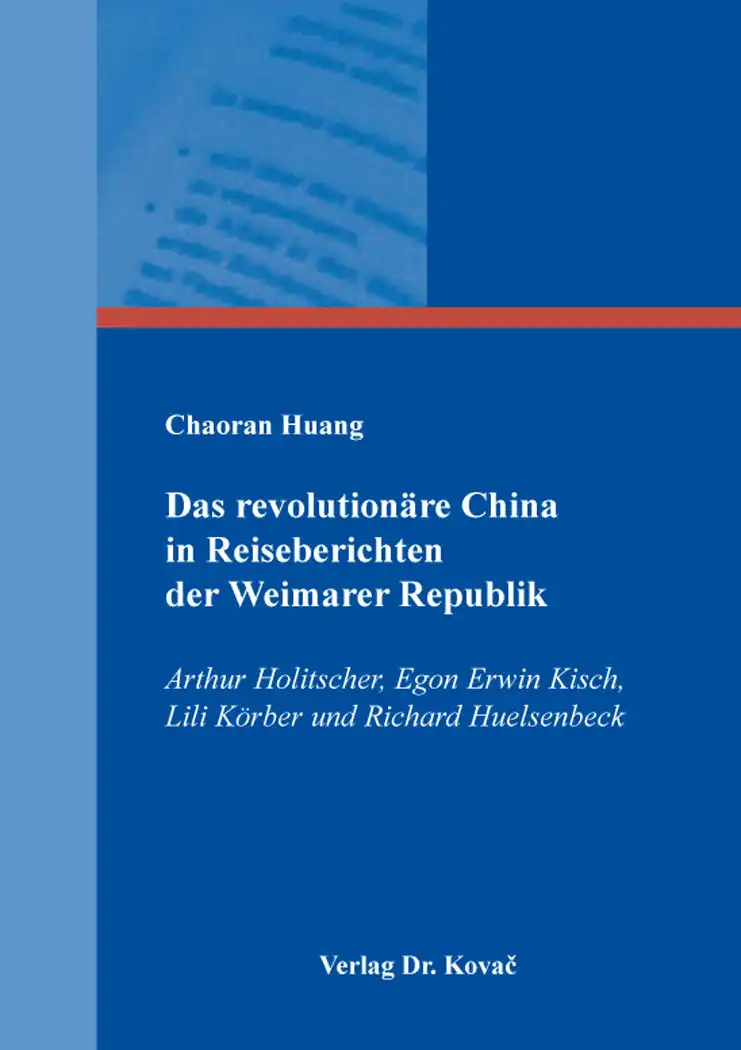Chaoran HuangDas revolutionäre China in Reiseberichten der Weimarer Republik
Arthur Holitscher, Egon Erwin Kisch, Lili Körber und Richard Huelsenbeck
POETICA – Schriften zur Literaturwissenschaft, volume 177
Hamburg 2024, 266 pages
ISBN 978-3-339-13764-7 (print) |ISBN 978-3-339-13765-4 (eBook)
About this book englishenglish
In the Weimar Republic, numerous reports on distant lands were published in the press, and the number of travelogues released in book form was remarkable. Among them, those focused on China played a role in enriching the understanding of the country during the significant changes of the 1920s and 1930s. These travelogues offered readers a chance to rediscover the revolutionary China.
What did China look like during that time? How did the authors depict the visited Chinese cities? What perspectives did the authors have? What sets apart and connects these travelogues? To answer these questions, this book meticulously analyzes Arthur Holitscher's Das unruhige Asien, Egon Erwin Kisch's China geheim, Lili Körber's Begegnungen im Fernen Osten and Richard Huelsenbeck's Der Sprung nach Osten. Additionally, it introduces in the first place the new developments in the Weimar Republic, the genre theory of travelogues and the various types of German travelogues about China in the early 20th century.
In the four main chapters, the book explores perceptions of Chinese cities such as Shanghai, Beijing, Guangzhou, Nanjing and Hong Kong, along with the writing techniques and styles of each author. In themed subchapters, explicit criticism of the oppression and exploitation by Western colonialists in the travelogues is presented.
The authors also observe the impoverished life and yet preserved traditional art and culture of the Chinese people. Last but not least, these leftist writers emphasize the revolutionary movement and the development of revolutionary forces in China – a "Yellow Hope" for the global revolution.
It is also noteworthy that individual points of view shape each travelogue. There are both orientalist descriptions and references, as well as vivid depictions of women's emancipation on-site. Thus, a multifaceted panorama of the revolutionary China during the Weimar Republic unfolds.
Keywords
20. JahrhundertArthur HolitscherChinaEgon Erwin KischLili KörberReiseberichtRichard HuelsenbeckStädtebilderWeimarer RepublikIhr Werk im Verlag Dr. Kovač

Möchten Sie Ihre wissenschaftliche Arbeit publizieren? Erfahren Sie mehr über unsere günstigen Konditionen und unseren Service für Autorinnen und Autoren.
